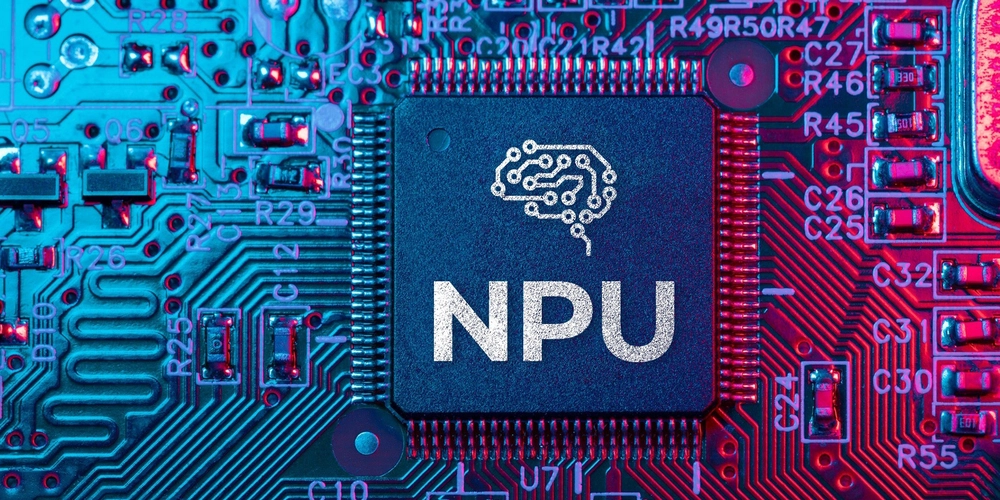🔍 Understanding NPU: The Future of AI Acceleration for Developers
In the fast-paced world of artificial intelligence and edge computing, Neural Processing Units (NPUs) have emerged as a game-changing innovation. These specialized chips are transforming how we run machine learning models, especially on mobile, embedded, and edge devices.
If you’re a developer working with AI/ML, hardware, mobile apps, or IoT—understanding NPUs is no longer optional. It’s essential.
🤖 What is an NPU?
An NPU (Neural Processing Unit) is a dedicated hardware accelerator designed specifically for neural network computations. Unlike CPUs and GPUs—which are general-purpose processors—NPUs are optimized for the kinds of operations that AI workloads demand most, like:
- Matrix multiplications
- Tensor processing
- Non-linear activation functions
- Low-precision arithmetic (e.g., FP16, INT8)
In short: they’re custom-built to run machine learning models faster and more efficiently.

🚀 Why Developers Should Care in 2025
The AI landscape is rapidly shifting toward on-device intelligence, and NPUs are at the heart of that movement.
Key Benefits:
- Speed: Drastically reduces inference time for deep learning models.
- Power Efficiency: Ideal for mobile and embedded environments.
- Privacy & Security: Keeps data processing local—reducing cloud dependency.
- Cost: Cuts down on server-side inference costs in production environments.
If you’re developing for platforms like Android, iOS, or edge IoT—your devices might already include an NPU (like Apple’s Neural Engine or Qualcomm’s Hexagon DSP).
🔍 Real-World Use Cases
Here’s how NPUs are being used today across industries:
| Industry | Use Case |
|---|---|
| Mobile | Face unlock, photo enhancement, voice assistants |
| Automotive | Driver monitoring, object detection, lane tracking |
| Healthcare | On-device diagnostics, wearable monitoring |
| Security | Smart cameras, real-time threat detection |
| Industrial IoT | Predictive maintenance, smart automation |
🧱 How NPUs Work (At a High Level)
Most NPUs rely on three core features:
- Tensor Cores: Specialized units for parallel matrix ops.
- Low-Precision Arithmetic: Faster computation using reduced bit-widths (e.g., INT8 instead of FP32).
- Dedicated AI Instruction Sets: Efficient execution of activation functions and pooling layers.
The result? NPUs deliver high throughput for tasks like CNNs (Convolutional Neural Networks), RNNs (Recurrent Neural Networks), and Transformers—all while consuming less power.
🧑💻 How to Leverage NPUs as a Developer
Whether you’re working in mobile dev, ML, or embedded systems, here are some practical steps:
-
Use Optimized Libraries:
-
Quantize Your Models:
Tools like TensorFlow Lite and PyTorch Mobile support model quantization to make them NPU-compatible.
-
Benchmark & Profile:
Use tools like Android Studio Profiler, MLPerf, or custom A/B testing to compare NPU vs GPU vs CPU inference times.
🏢 Key Players in the NPU Space
- Apple – Neural Engine (A-series, M-series chips)
- Google – TPU (Cloud + Edge TPUs)
- Qualcomm – AI Engine (Snapdragon SoCs)
- Huawei – Ascend NPU
- MediaTek – APU (AI Processing Unit)
- Intel & NVIDIA – Via AI accelerators and DL cores
🔮 What’s Next?
Here’s what’s coming down the pipeline in 2025 and beyond:
- Hybrid Architectures: CPUs, GPUs, NPUs working together seamlessly.
- Federated Edge AI: Enabling collaborative AI without central servers.
- AI Model Offloading: Smart delegation of tasks to NPUs for optimal efficiency.
- NPU-as-a-Service (NPUaaS): Cloud-edge platforms enabling dynamic allocation of NPU workloads.
🧠 Final Thoughts
Neural Processing Units are no longer niche hardware—they’re the new standard for intelligent computing. As developers, the earlier we embrace and optimize for NPUs, the more performant, scalable, and future-proof our applications will become.
“The best way to predict the future of AI… is to accelerate it.”
Let me know if you’re already working with NPUs, or planning to integrate them into your next project! 👇
📬 Follow me for more content on AI, embedded systems, and next-gen computing.
✉️ Questions or collaboration ideas? Reach out at srijansah11@outlook.com

